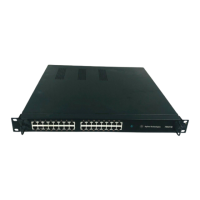SDN Theory of Operation
2-2
SDN Theory of Operation
SDN General Description
The Serial Distribution Network (SDN) is a digital communications
network designed to share patient physiological parameters and other
data among all instruments connected directly to the SDN.
The SDN uses cables containing a twisted shielded pair of wires to connect
the instruments to the Agilent CareNet Controller (ACC). Digitized patient
data is transmitted SERIALLY through the wires of the NETWORK. The
ACC circuitry manages the timing and DISTRIBUTION of the digital
patient data. Hence, it is appropriately named the SERIAL DISTRIBUTION
NETWORK.
The SDN is a half-duplex network using terminated shielded twisted pair
cable(s) to carry serial digital data. All SDN data is transmitted
differentially and serially using block code modulation. Brief explanations
of the SDN terms are given below.
Term Definition
SDN Data Physiological information such as parameters or
waveforms, or non-physiological information such
as bed labels, annotation, alarm messages, or time-
of-day.
Digital Using binary logic where a high voltage level is
called a one (1) and a low voltage level is called a
zero (0).
Serial A string of ones (1) and zeros (0) in a row create
defined words, similar to alphabetic letters used to
define known words. However, the SDN words are
all the same length. These words are combined to
make up messages. Different messages have
different lengths.
Half-Duplex Signals move in one direction at a time over the
data wires. Instruments using the SDN never talk
and listen at the same time.
Block Coded A digital coding scheme that facilitates sending
serial digital data by insuring not too many ones (1)
or zeros (0) are transmitted. Timing information is
extracted from the frequent edge transitions (0 to 1,
or 1 to 0). This keeps all instruments synchronized
while minimizing the bandwidth required.

